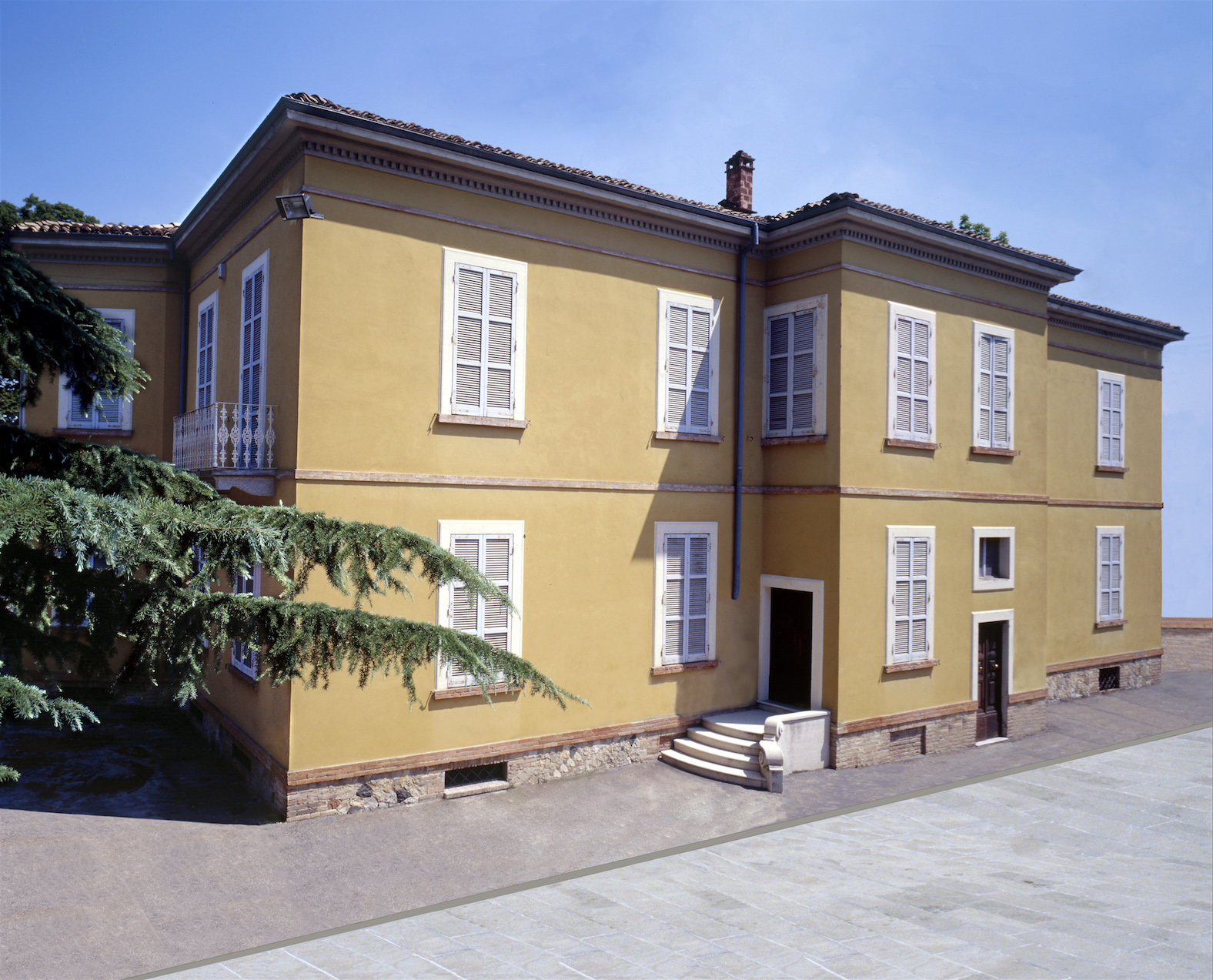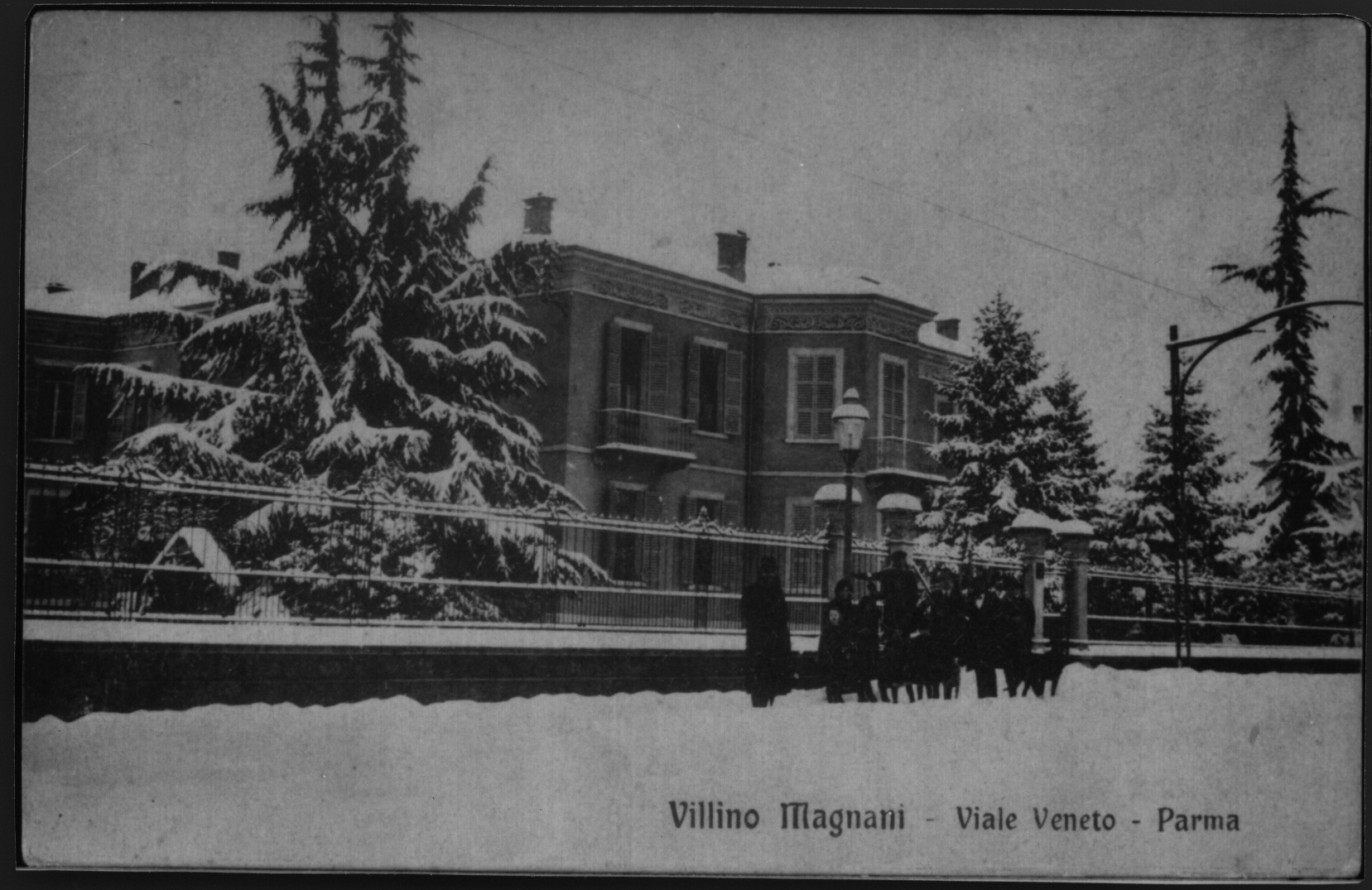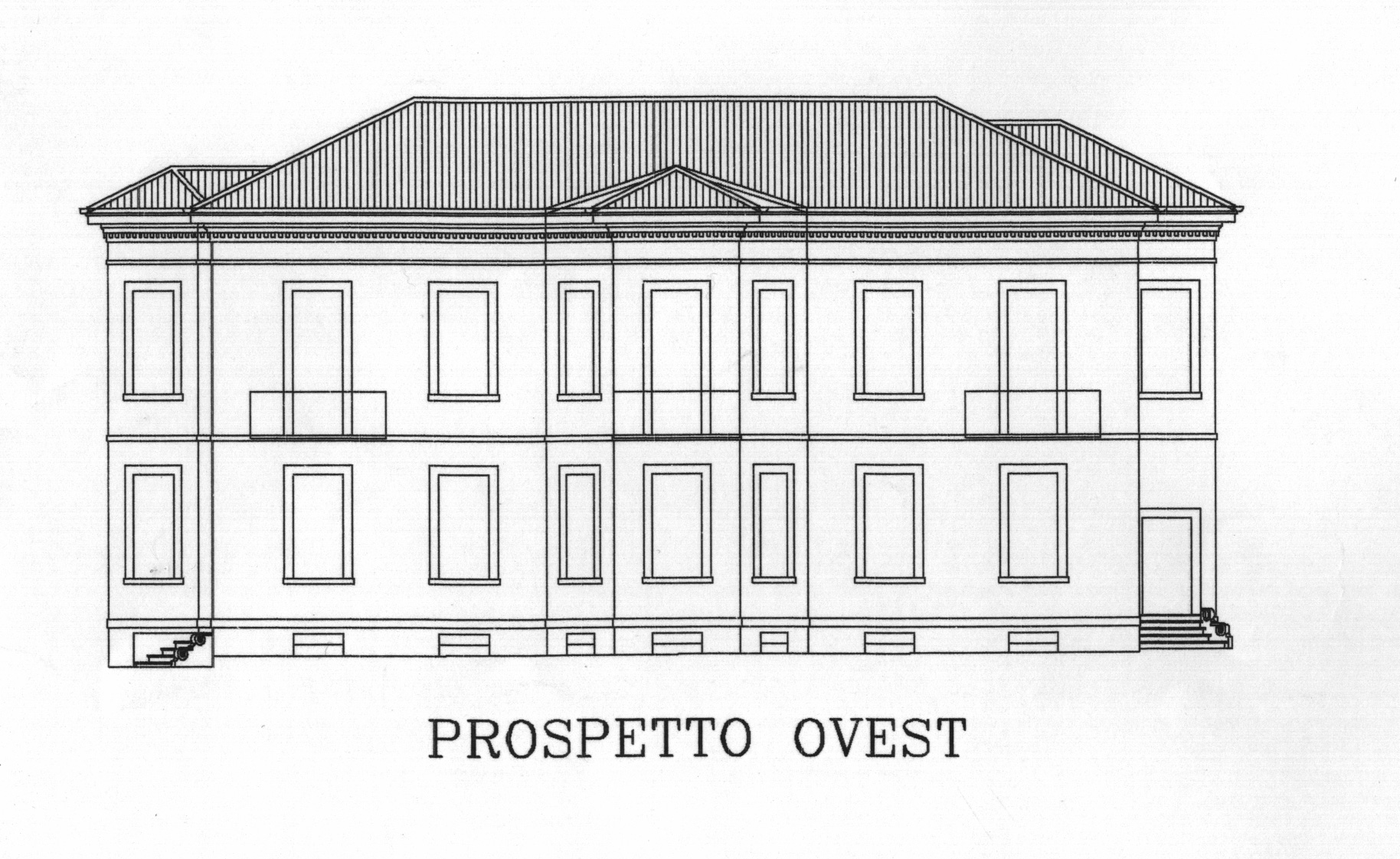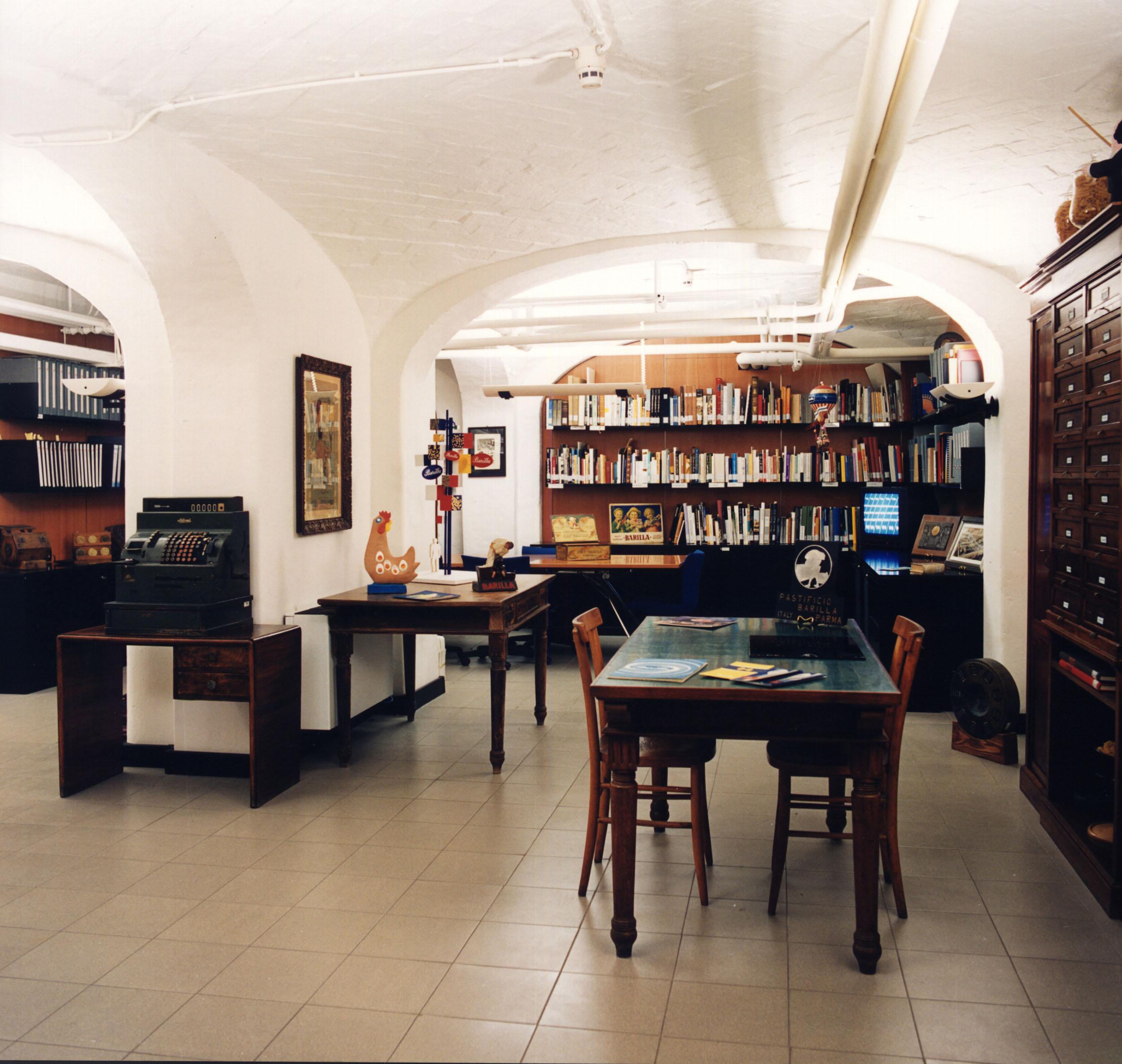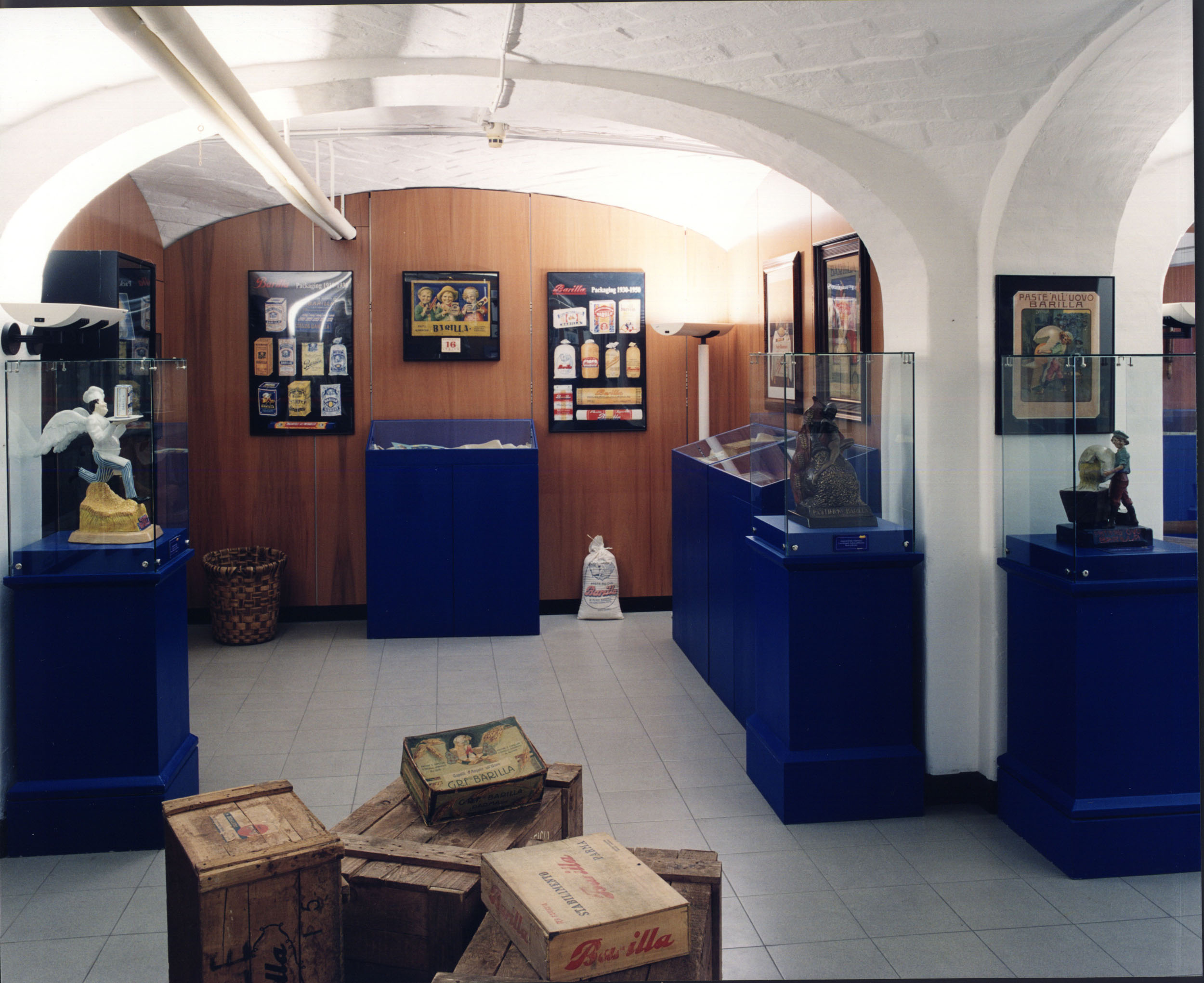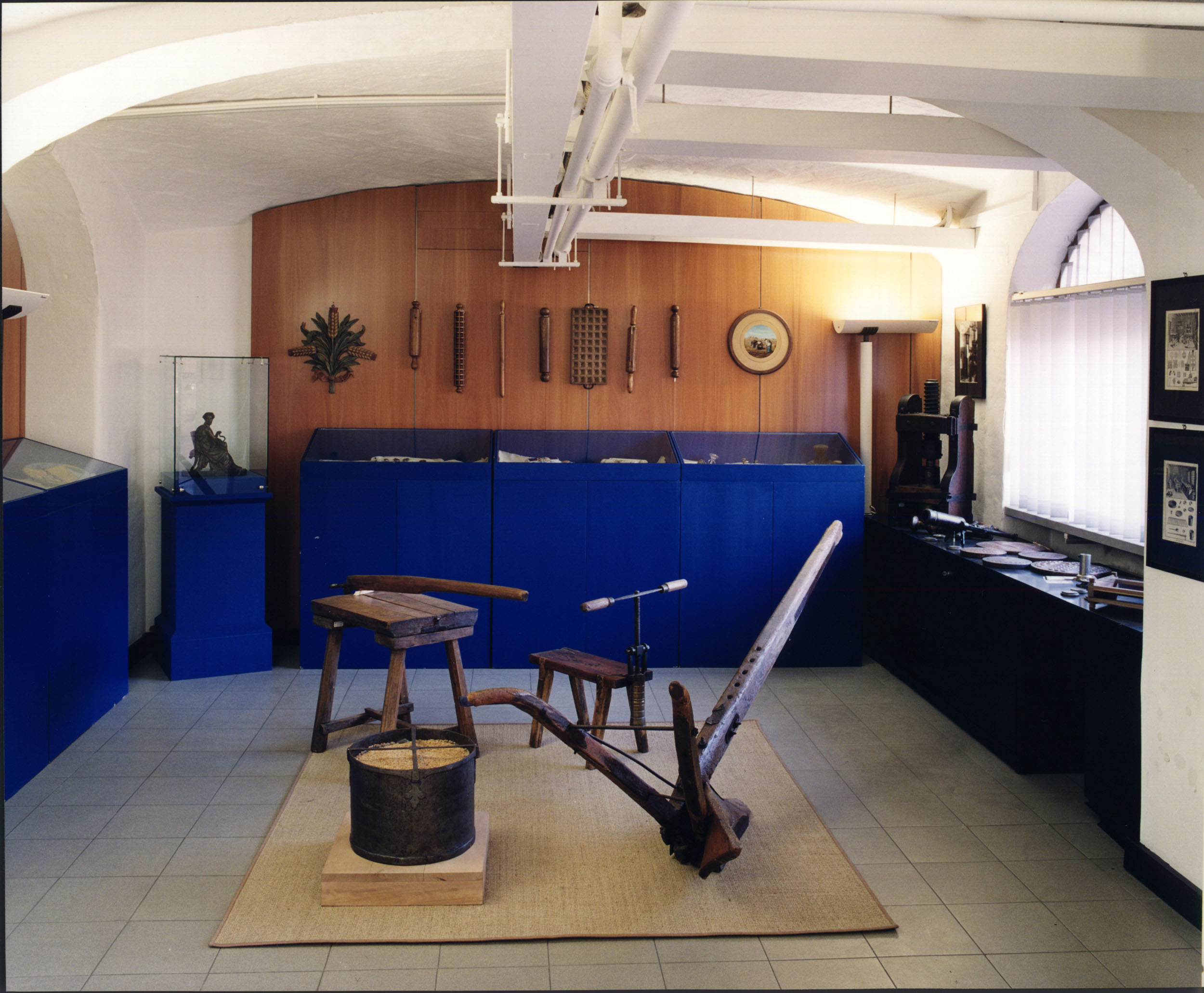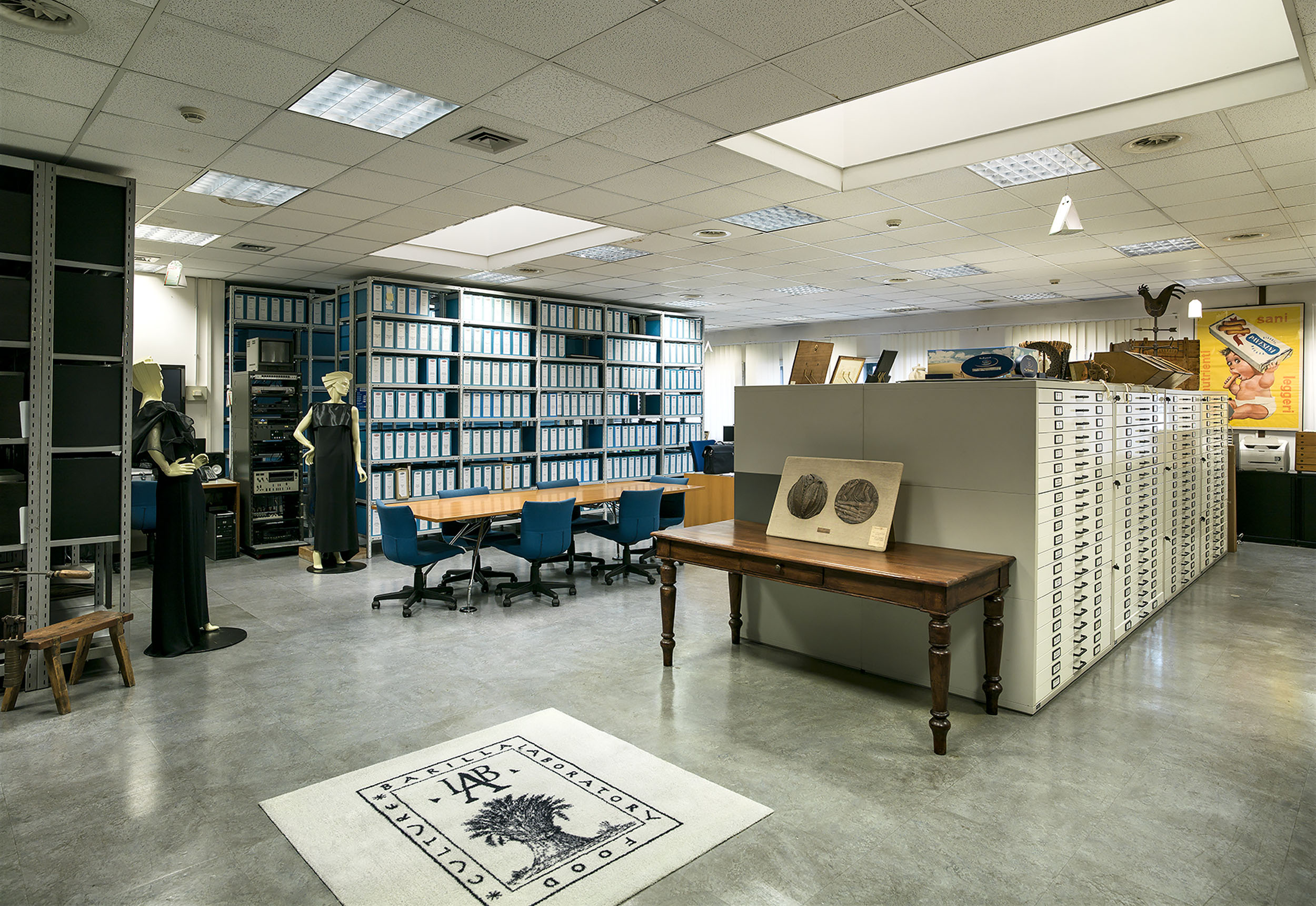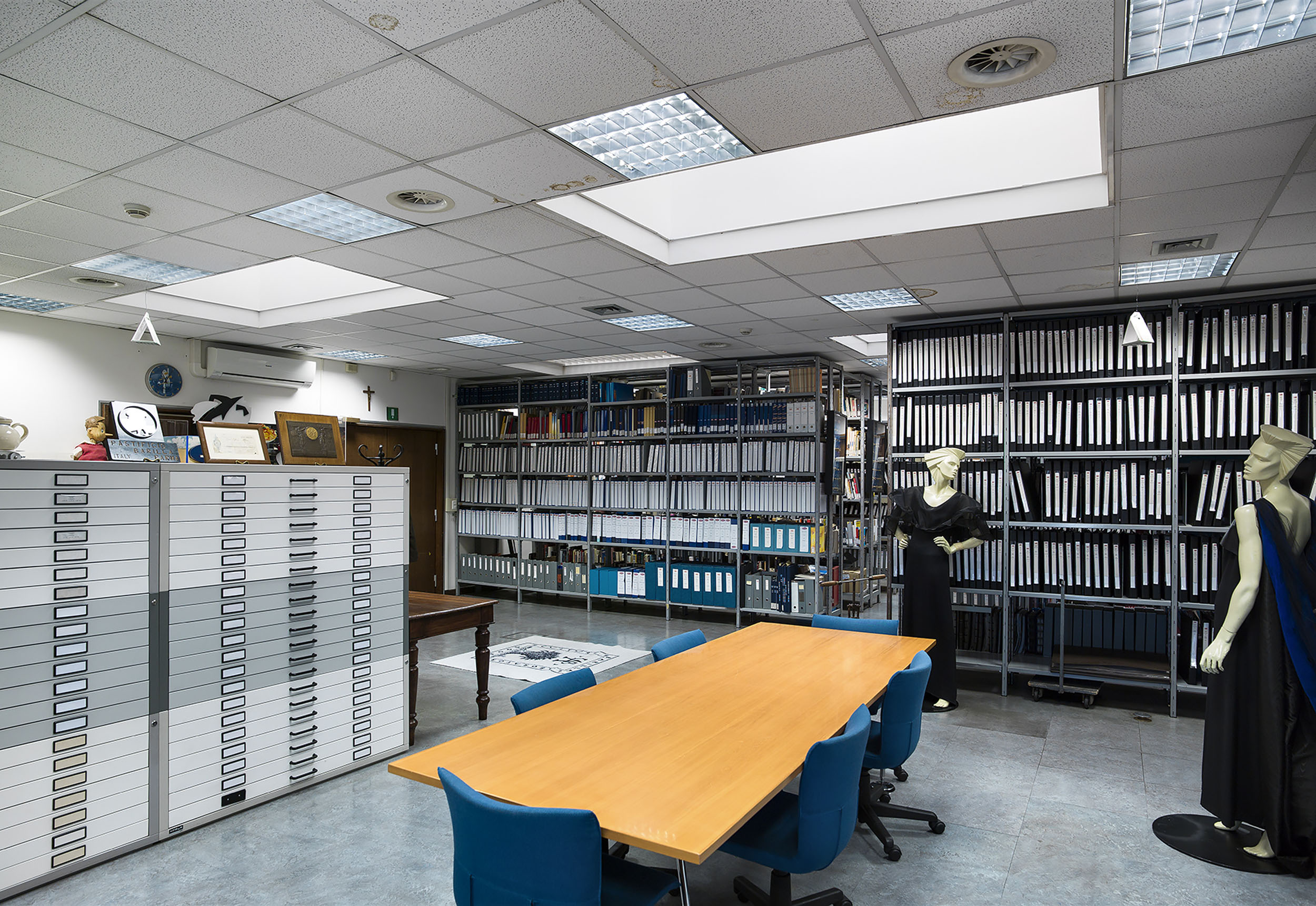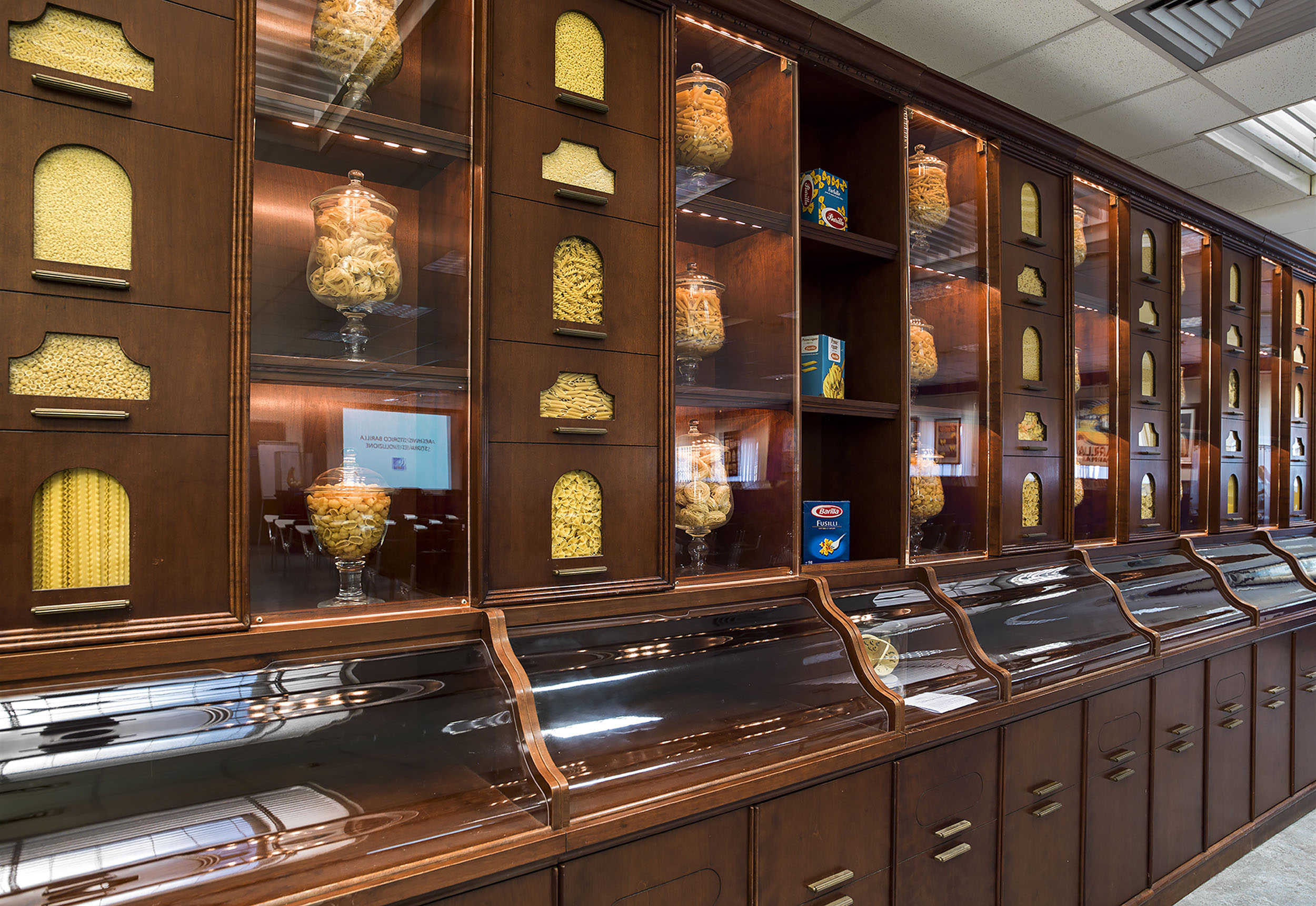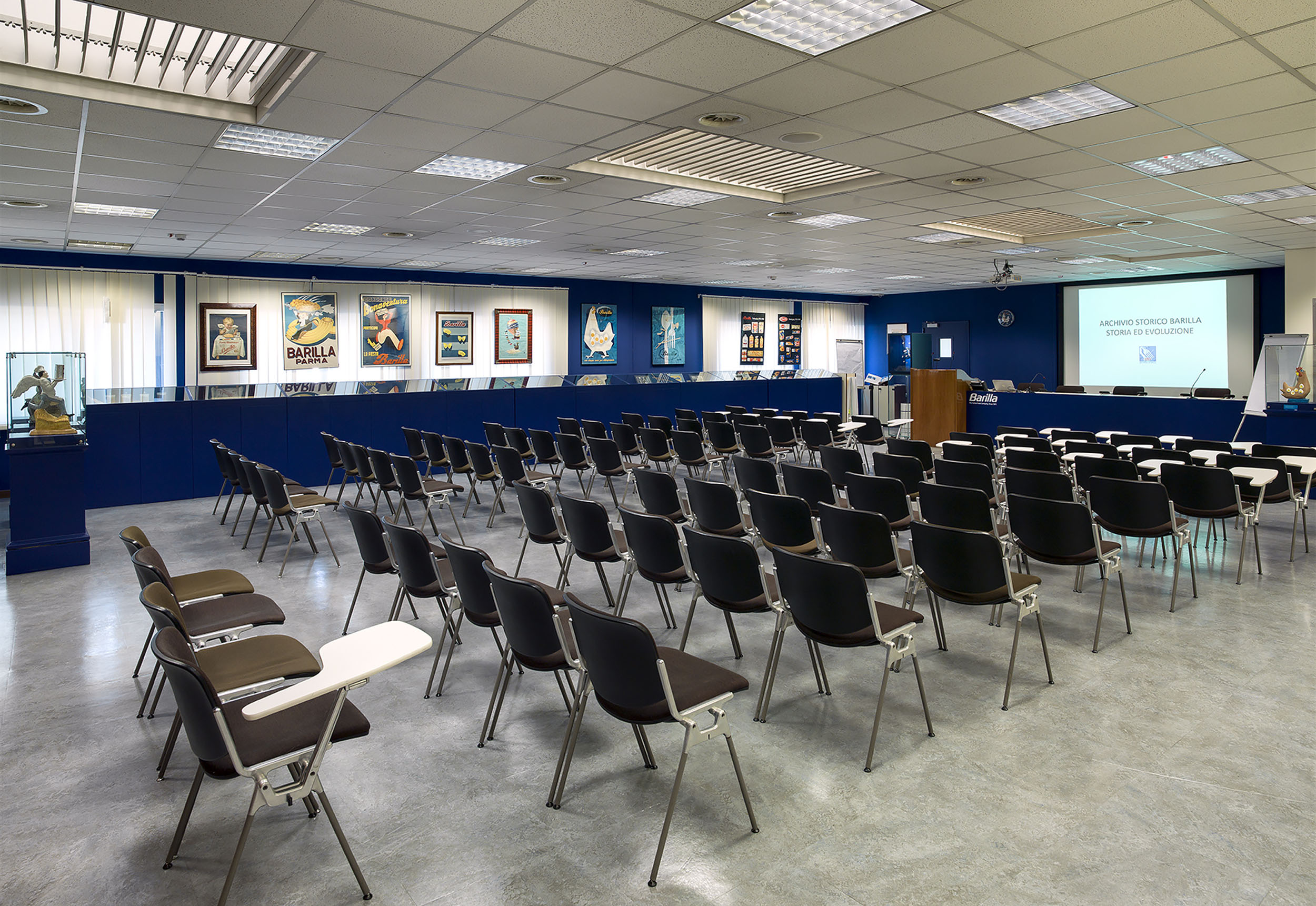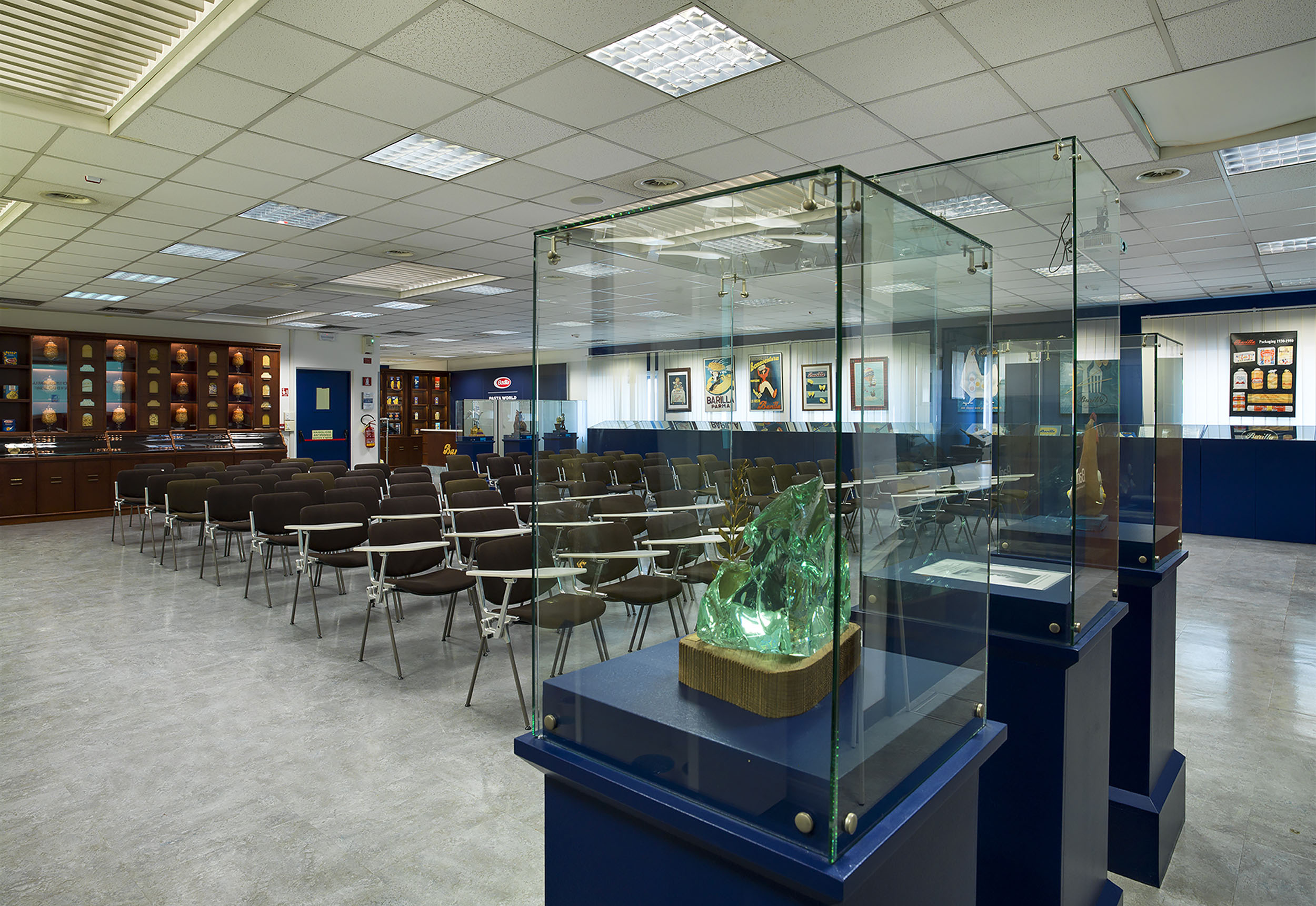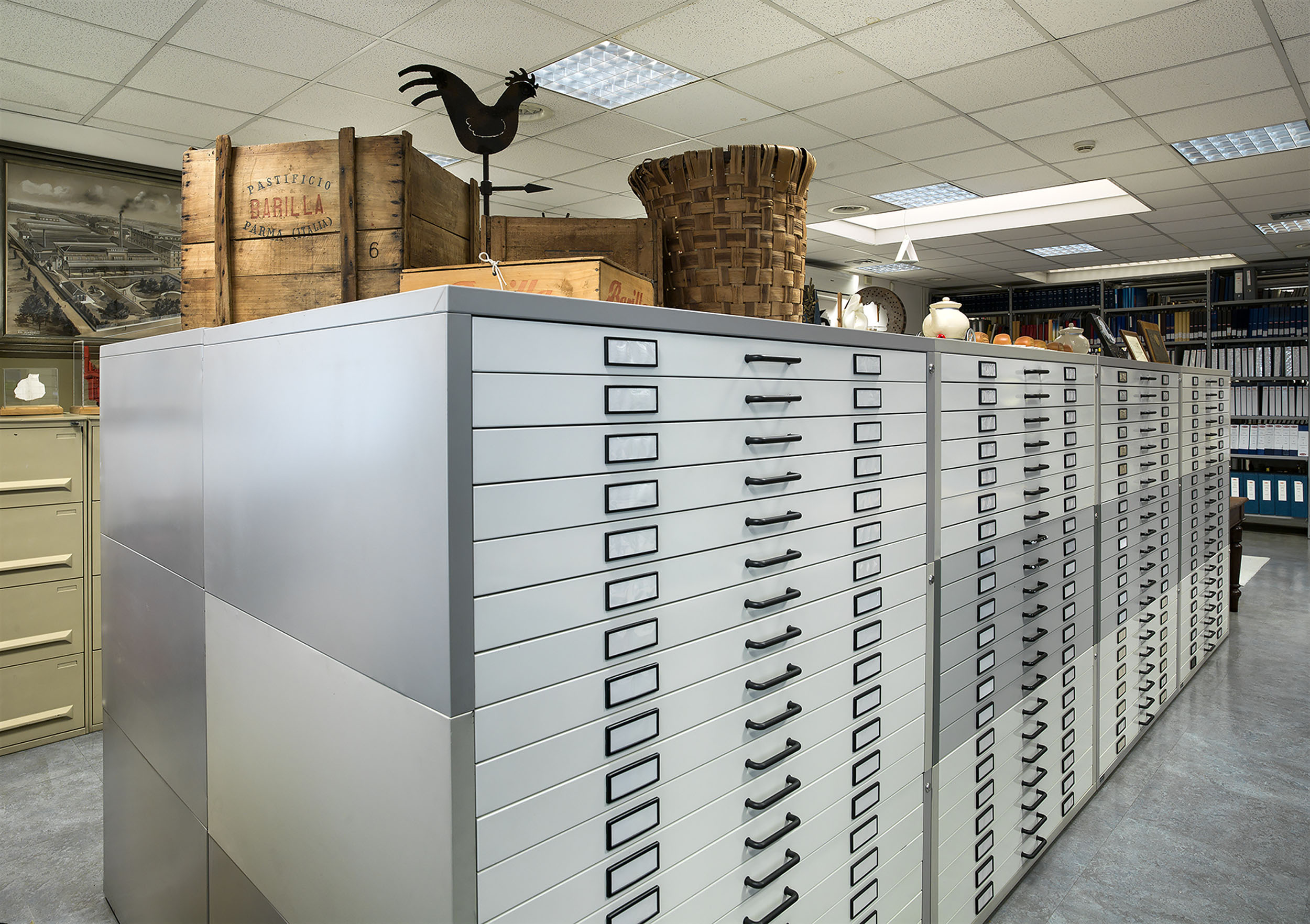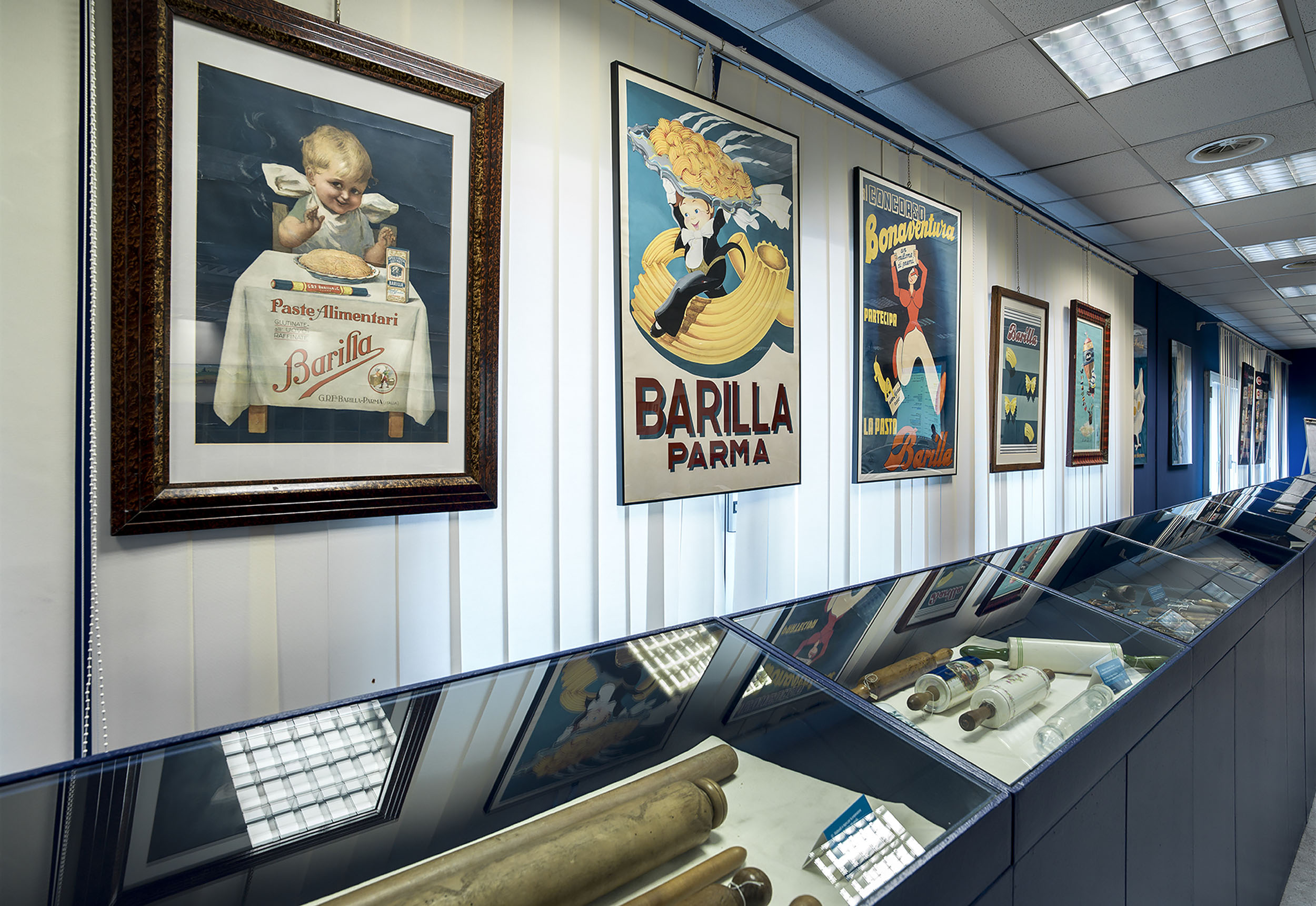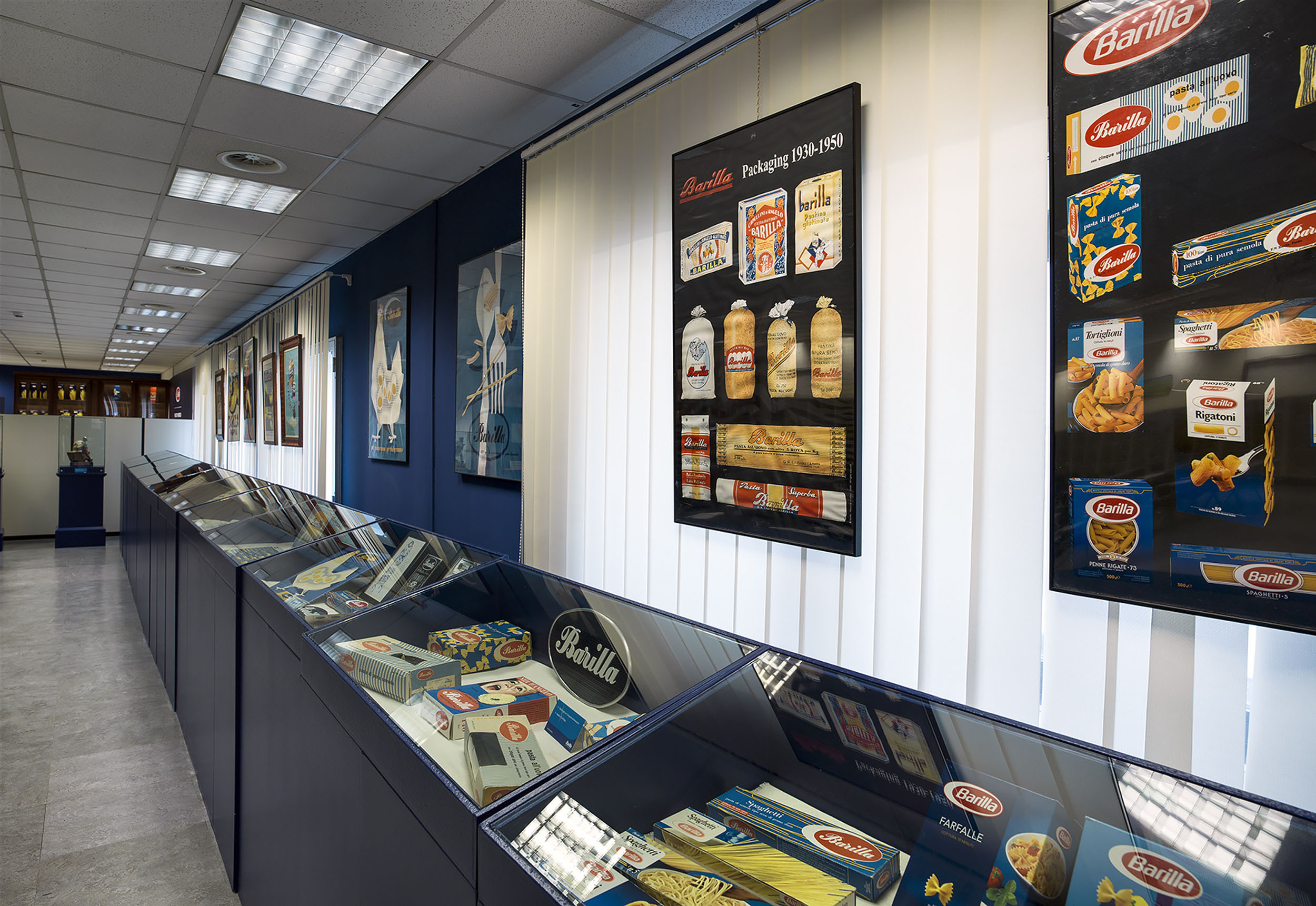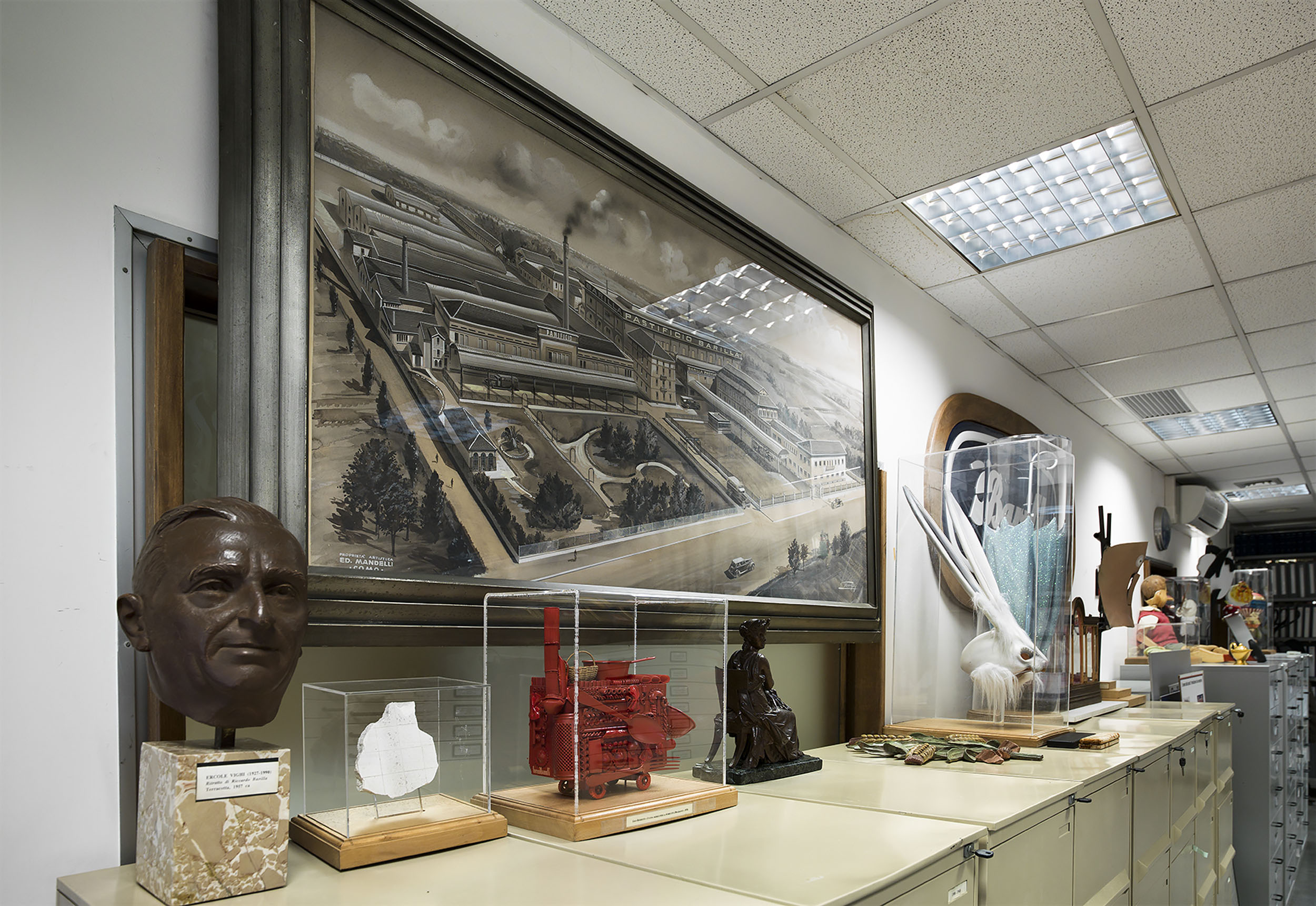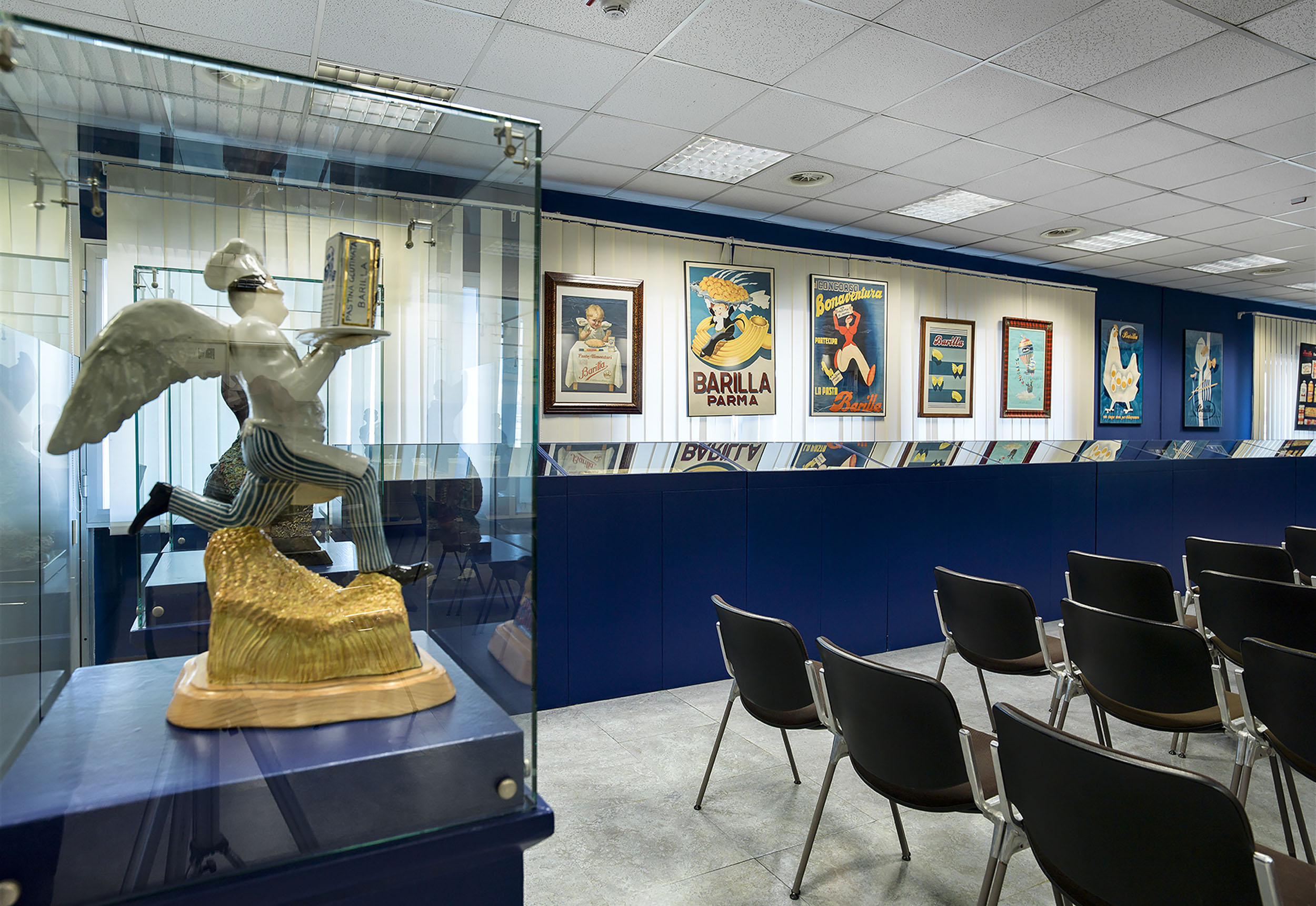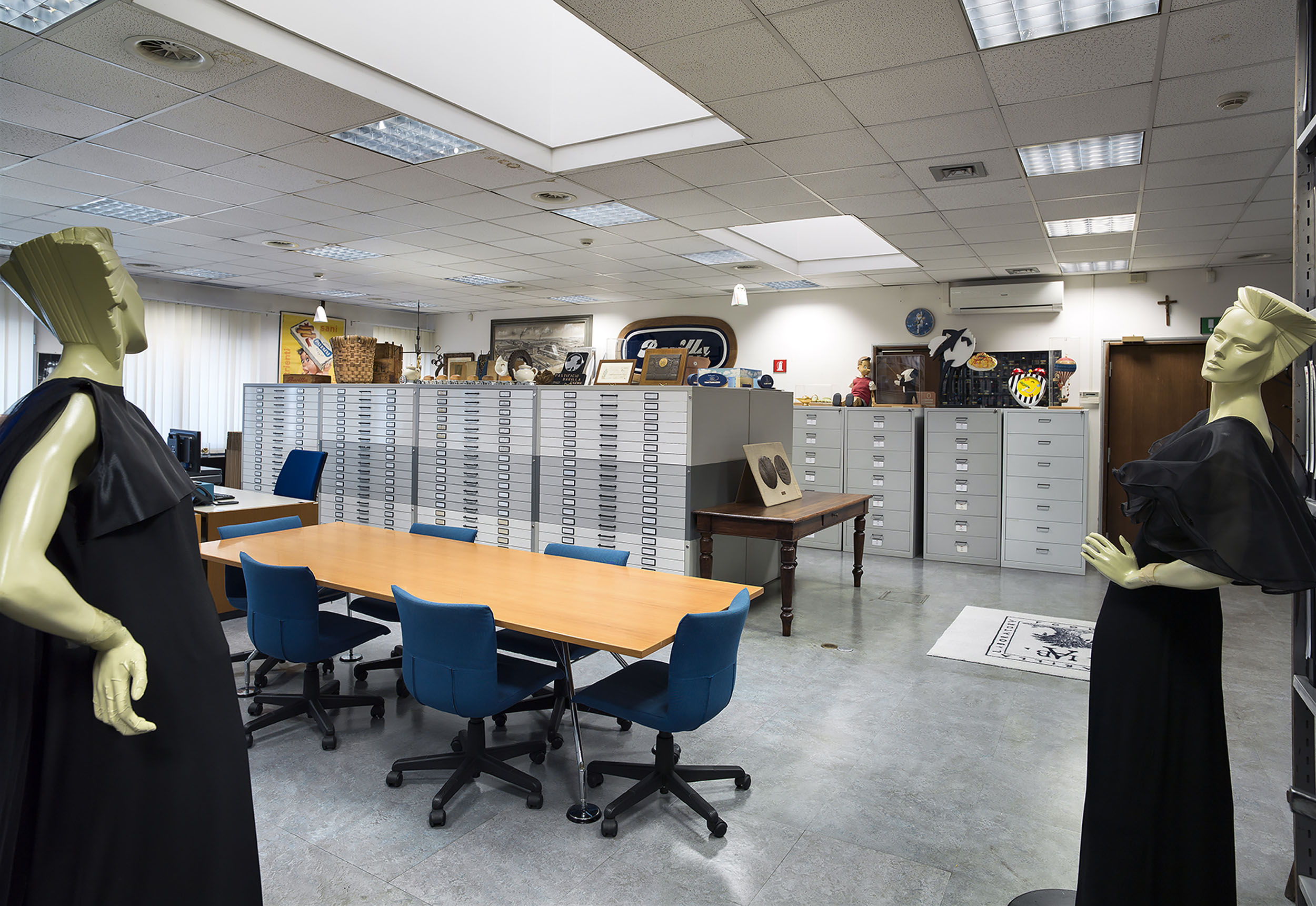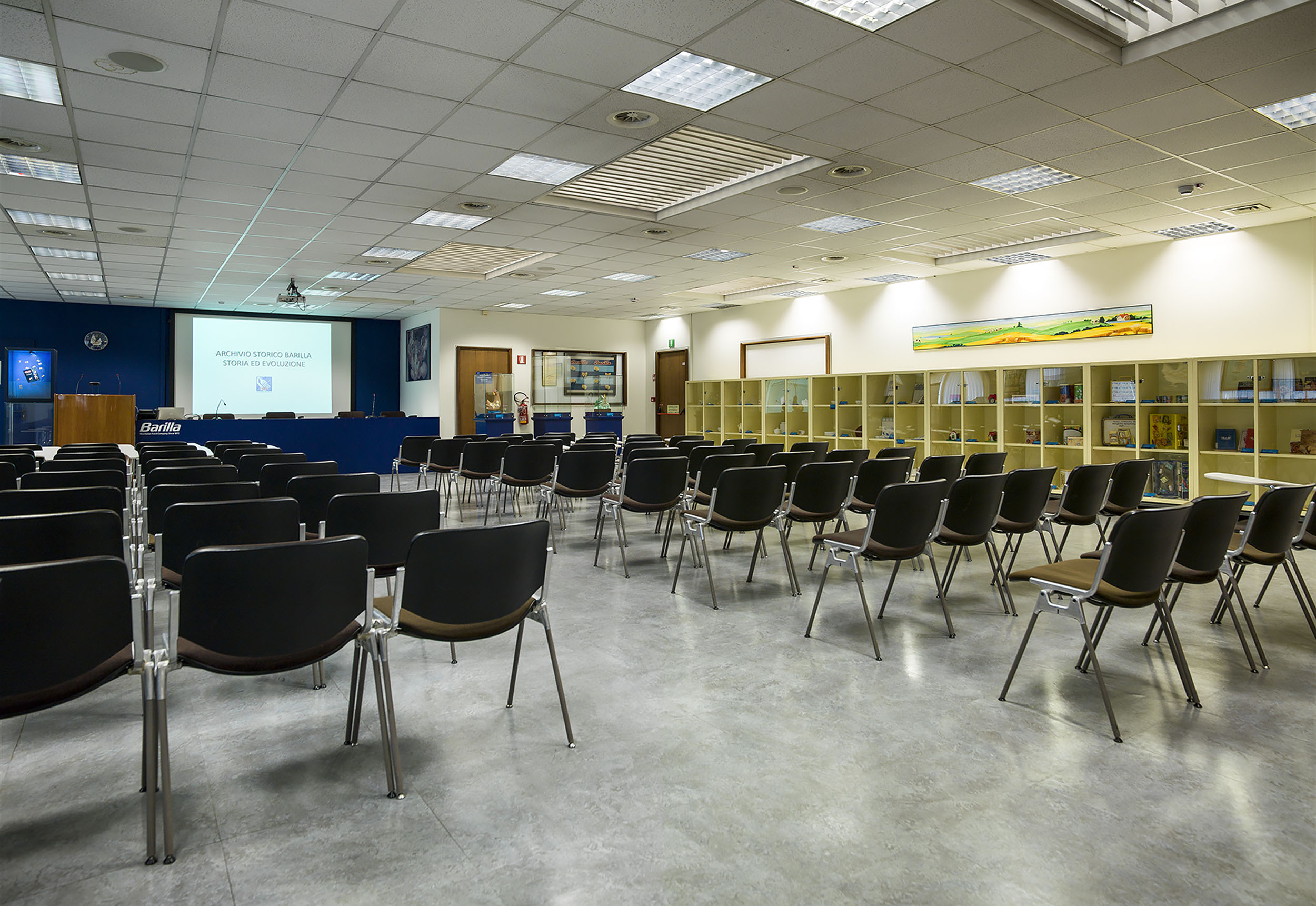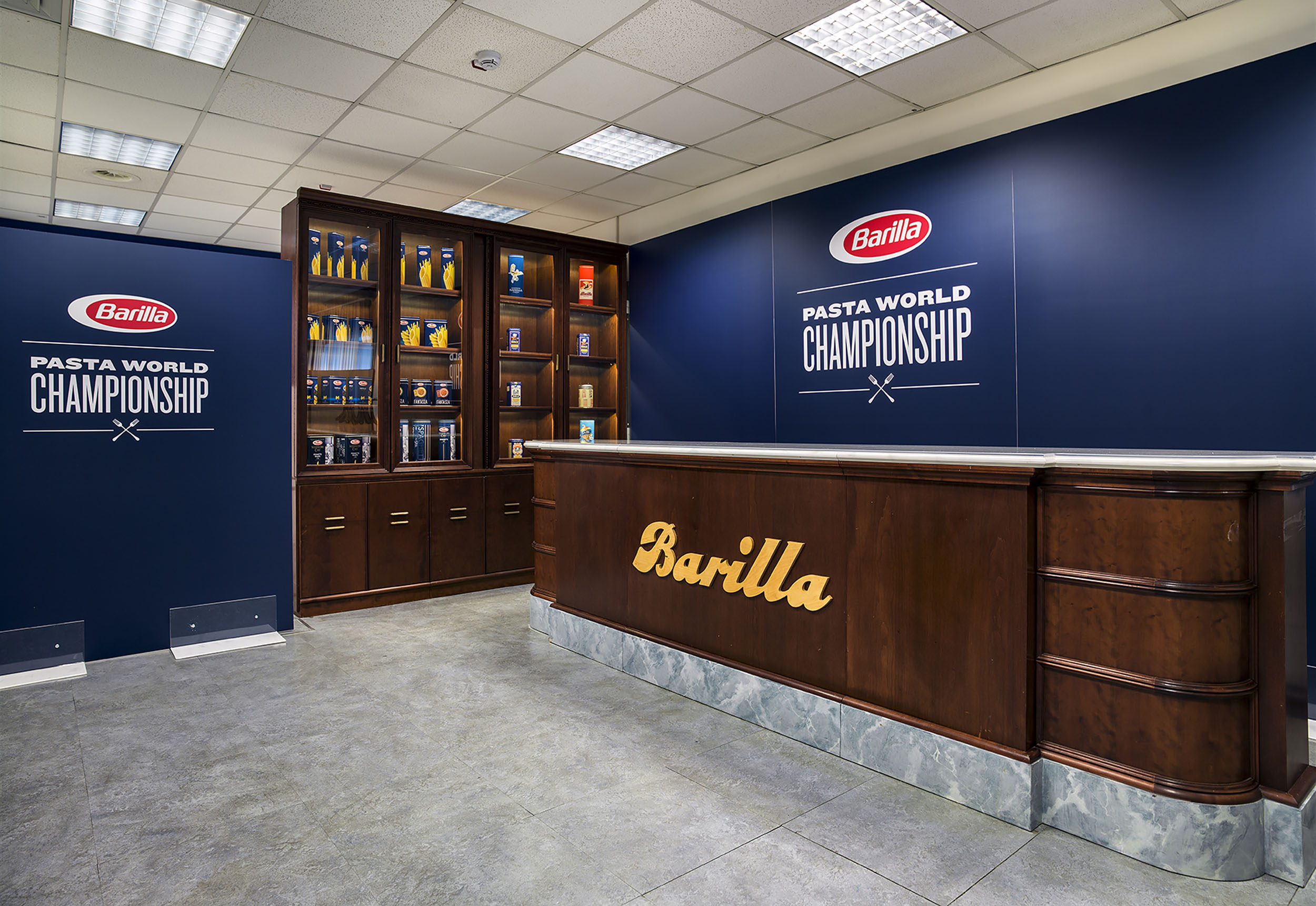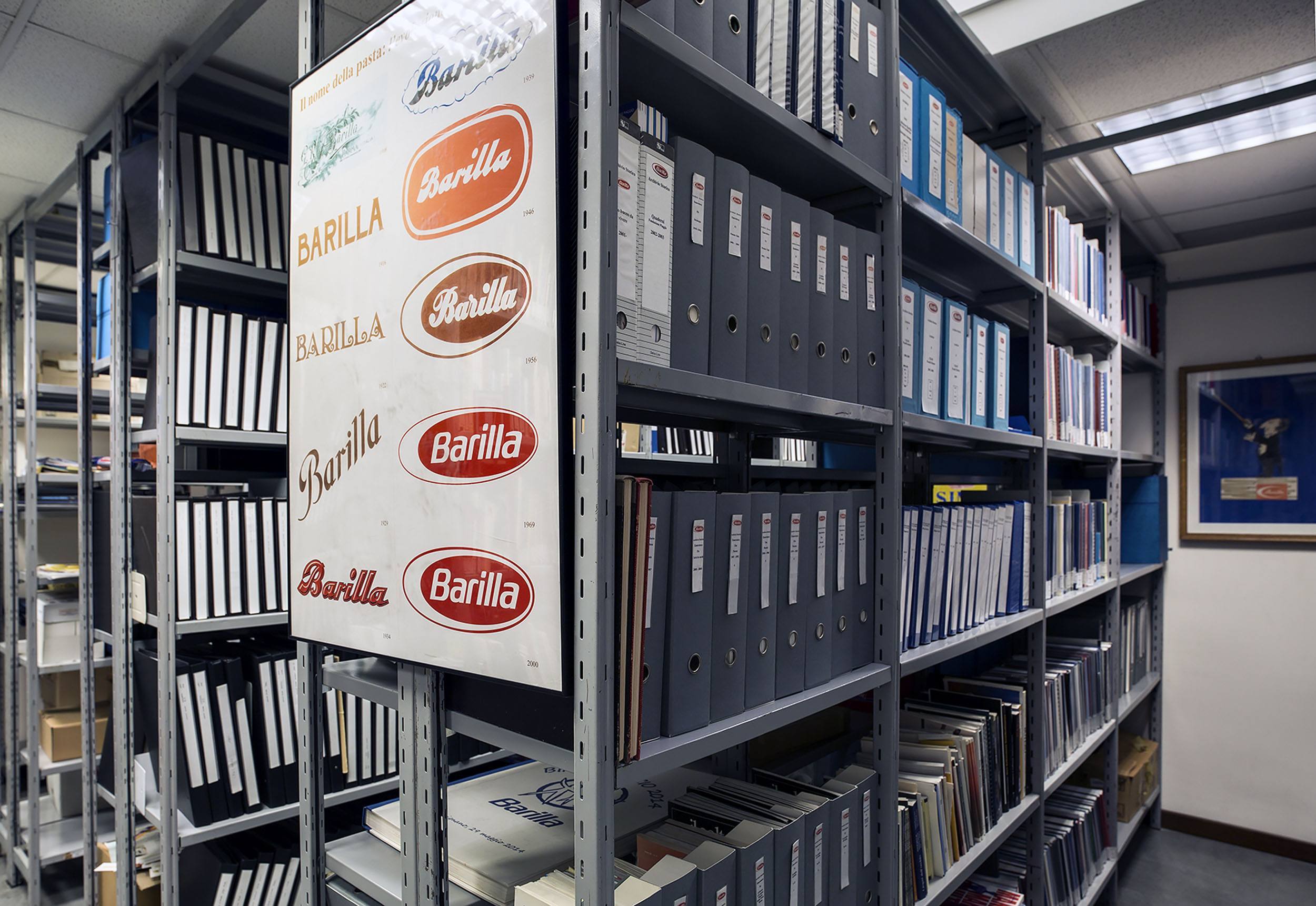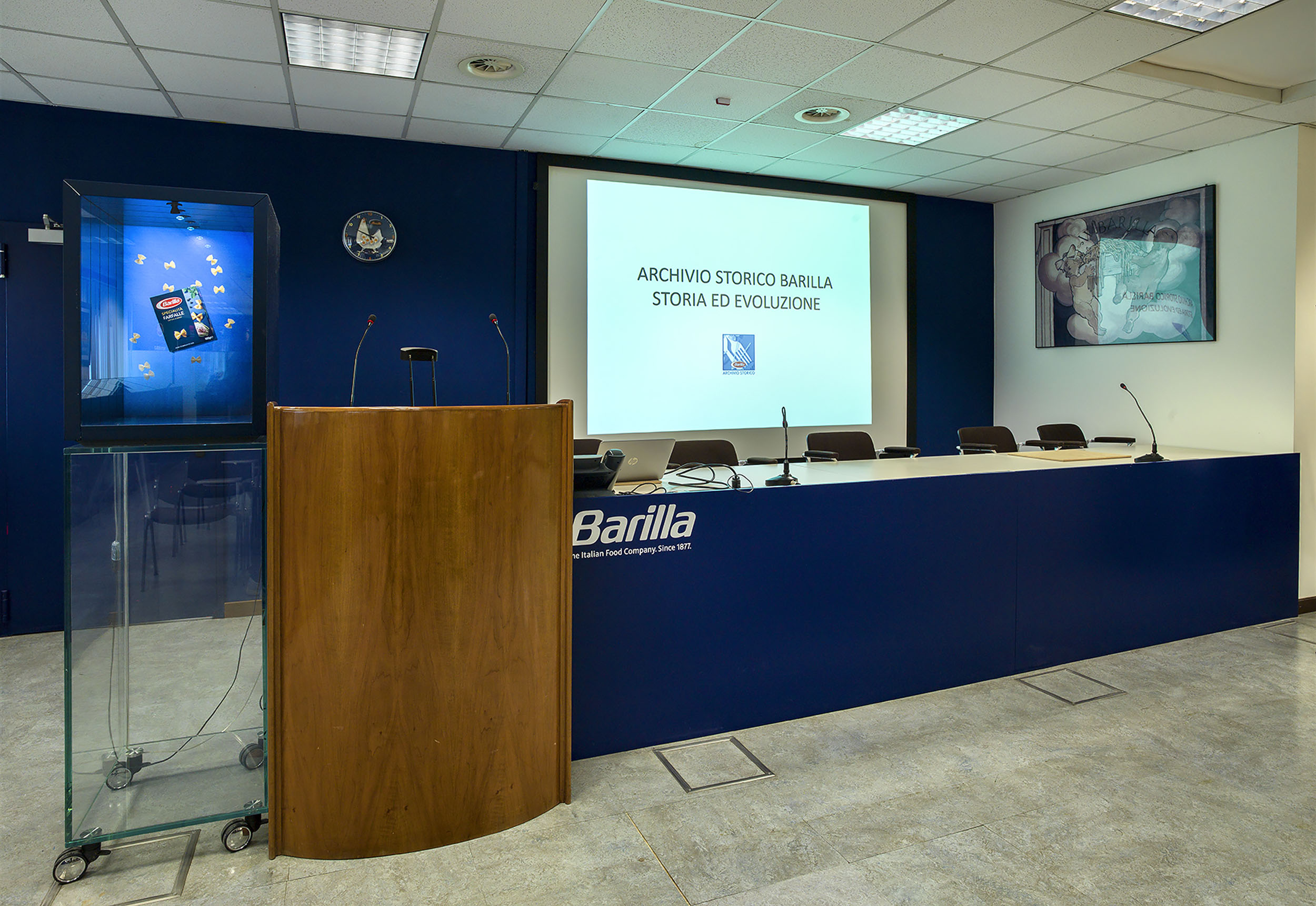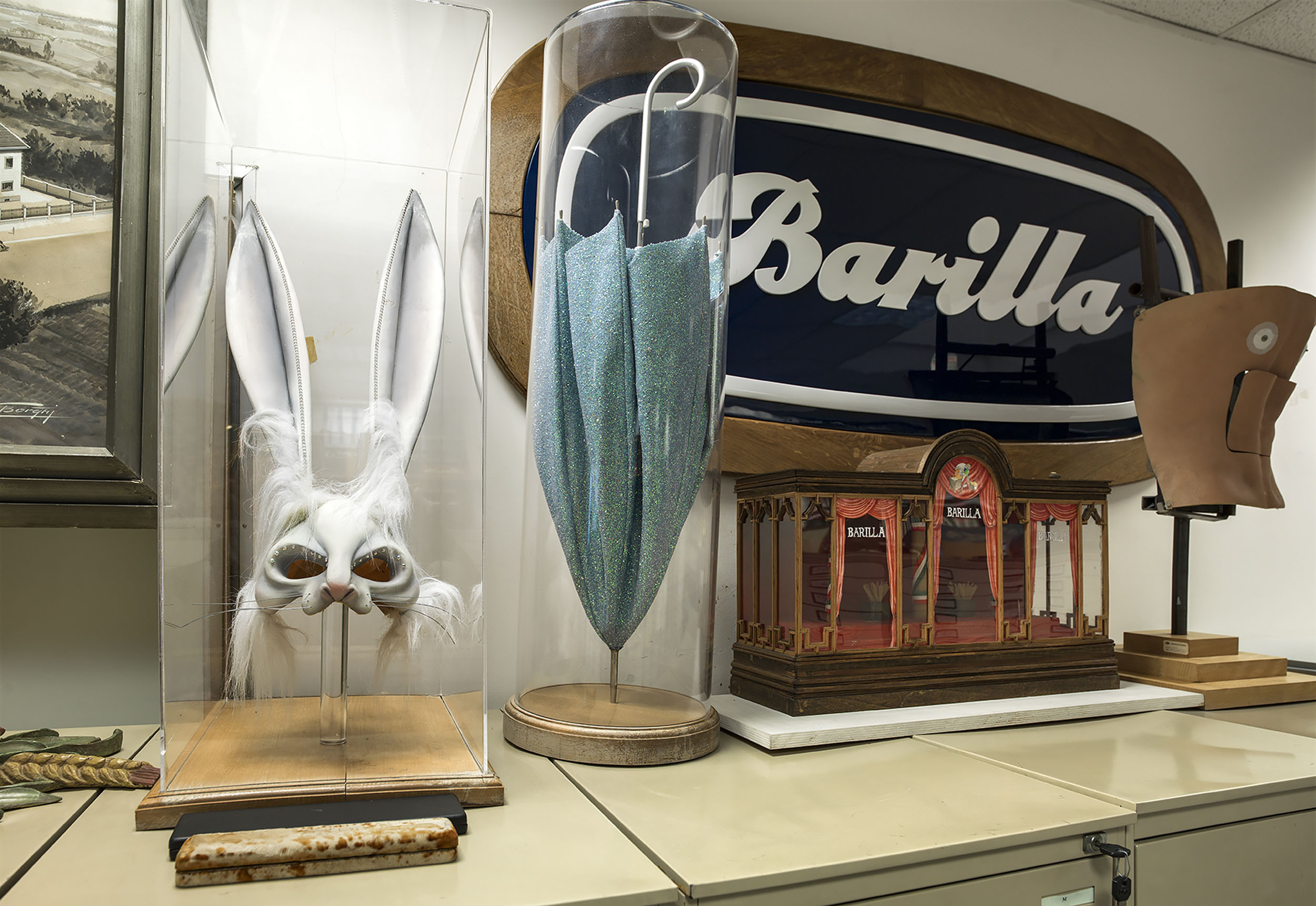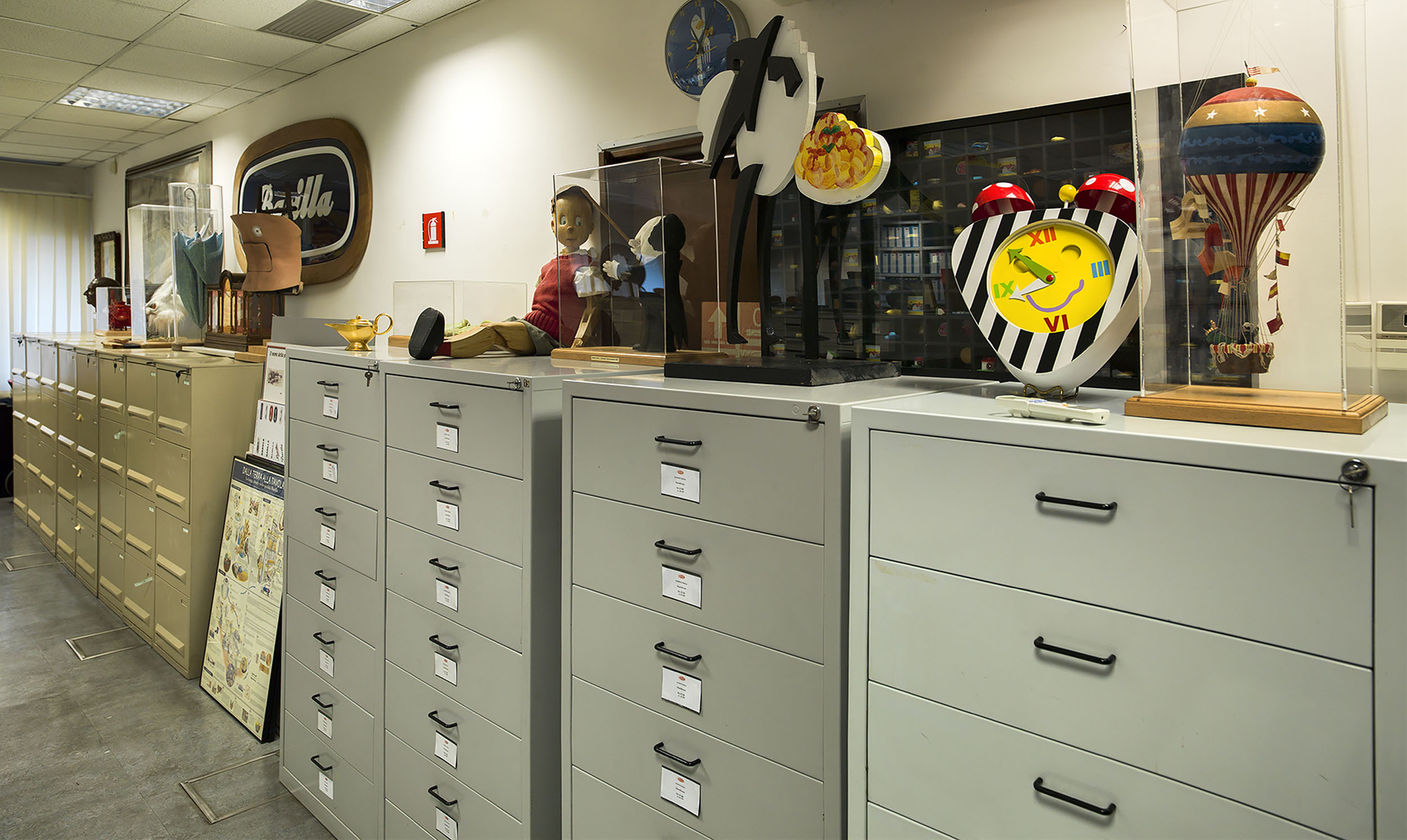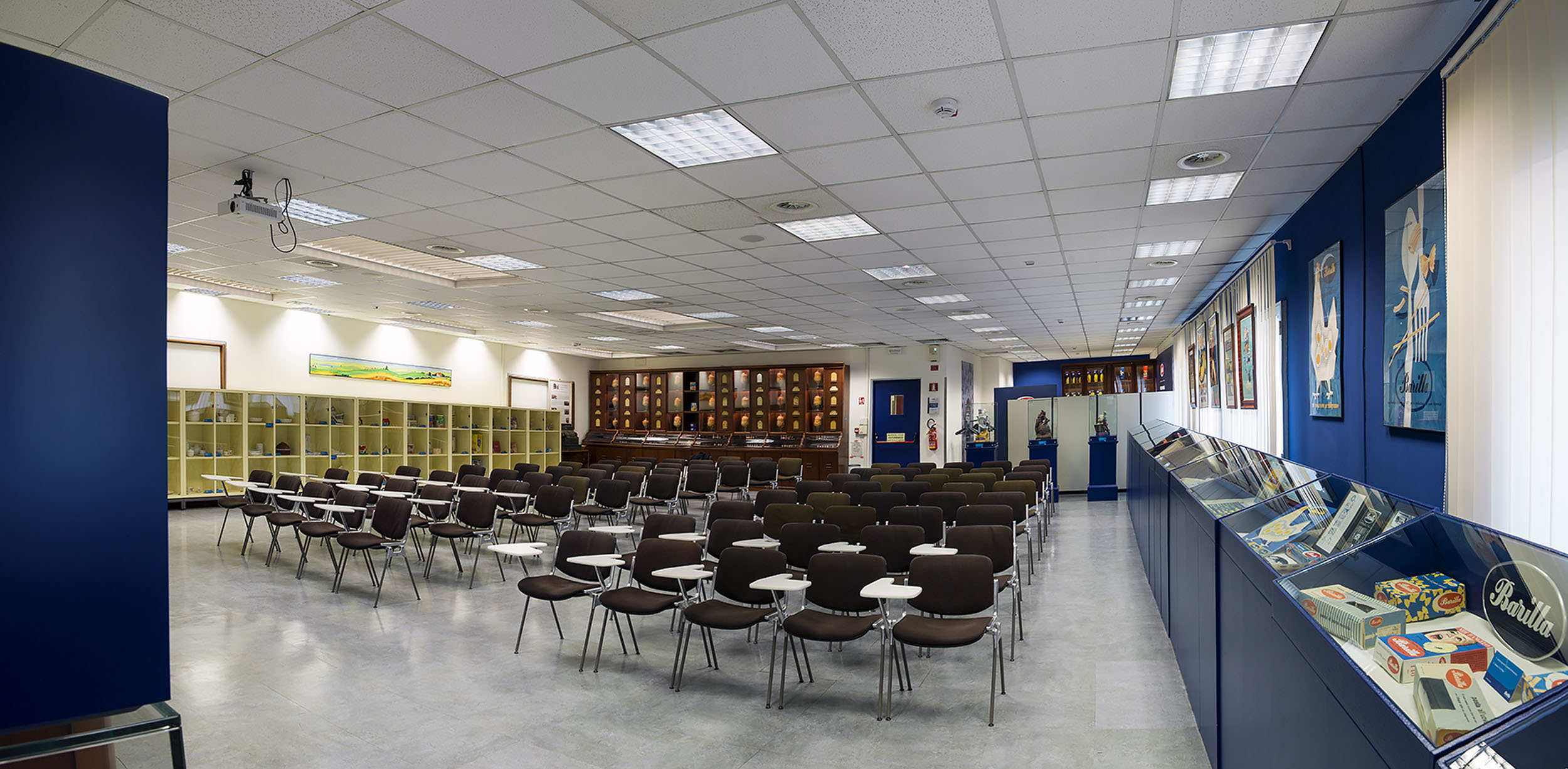The Historical Archive conserves documents relating to the lives, the projects, the decisions, the strategies, the products and the men and women who have worked in Barilla.
This is not, however, a ‘cemetery of memories’ but a living archive that is constantly updated and open for consultation. It is an efficient operative tool for a company that wants to encourage innovation in the respect of its own traditions, with the awareness that the actions taken today will be history tomorrow and will have a voice in the future only if someone has the will to ‘read’ them.
The story of the Archive
A Living Archive
A quick overview of our history
The Barilla Company has its origins in the bakery that Pietro Barilla Senior opened in Via Vittorio Emanuele in Parma in 1877. A continuous and progressive growth characterize its history. In 1910, the factory in Barriera Vittorio Emanuele was built and Pietro was succeeded by his sons Gualtiero and Riccardo.
After the premature death of Gualtiero, the brother Riccardo takes the reins of the Company, supported by his wife Virginia.
After World War II, with the leadership of Pietro and Gianni, the basis for the strong development of the Fifties were set thanks to the construction of the new plant in Via Veneto in 1957 and the one in Pedrignano in 1968. In 1971, Gianni and Pietro Barilla sold the company to the American multinational Grace, but in 1979, Pietro Barilla bought back the majority share of the company. On Pietro’s death in 1993, his sons Guido, Luca and Paolo took the reins of Barilla, undertaking a deep internal reorganization and international expansion.
Barilla is the world leader in pasta production as well as European leader for its bakery products with the brands Mulino Bianco (since 1975) and Wasa (1999). The Barilla group also includes the Braibanti brands (since 1987) and Voiello (1973) for the pasta production and Pavesi (1992) and Pandistelle (since 2007) for bakery products.
A symbolic project
The history of Barilla has intertwined for more than a century with that of the city and, more generally, with the history of the Italian economy and culture. In 1987, The “Historic Archive Project” was about to start by will of the Property in order to collect and give value to the historical documentation related to the Company, which was then more than one hundred years old.
For a long time, in fact, the need to preserve the memory of the past had been felt, and, since the 1980s, partly due to the deeper awareness of Pietro Barilla, there was a new attention for the history of the Company, which, in 1977, celebrated quietly its centenary. In that occasion, it was realized that the traces left by those one hundred years of activity were modest and scattered.
After a series of preliminary meetings, in April 1987 an ordering system for the historic documentation of the company was taking shape. Since the beginning the guidelines of the work for the following years were defined: getting back the memory of the past; preserving with the most correct criteria the materials and the documentation; giving them value to make them become again part of the Company’s culture and of the wider social reality.
A suitable location – first small unit of the current Historical Archive – was then chosen in Villa Magnani, an Art Nouveau building that belonged to a family of cheese business owners and that once was adjacent to Riccardo Barilla’s properties. It was then incorporated into the Parma factory area and today it lies in the heart of Barilla Center that, built on the site of the 1910 pasta factory, offers the most modern services: a hotel, indoor car parks, a cinema and the “Academia Barilla” cooking Academy.
The wide cellars, dominated by attractive cotto tile vaults, that for decades had hosted thousands of Parmesan cheese wheels thanks to their ability to maintain constant temperature and humidity rates, were chosen to host once restored, the headquarters of the Barilla Historic Archive.
What initially was possible to recover from the offices and the central Archive formed the first nucleus of the Historical Archive. Actually, it only included a few objects that could be saved from the destiny of the flow of time.
At first sight, it might seem odd that such a huge company, over one hundred years old and with such an extensive influence, could have so few documents relating to its history.
Actually, for various and sadly concomitant reasons, much of the historical archives had been lost. When the company was sold to Grace, Pietro Barilla moved the archive of the company’s Property that collected the Company documentation from the start of the Twentieth century until 1970, and it was only several years after his return that it would be deposited in the Historical Archive. The subsequent transfer of the Barilla offices from Parma to the new Pedrignano Plant – in the absence of specific instructions about it– had been the occasion for eliminating – as often happens during moves – the most consistent and ‘outdated’ part of the documentation.
We therefore found ourselves in the paradoxical situation of organizing an archive that did not exist. After losing hopelessly the stratification of the documents typically created by the corporate activity, we were left with few, though important, documents without their supporting contextual records, that had survived the years due to their intrinsic importance or because they had occasionally ended up under the eye of a more careful and… conservative employee.
It was then necessary to undertake a wide integration of the relevant material still existing elsewhere, through searches in public and private Archives, advertising agencies, production studios, that more than once allowed the company to rebuild, almost completely, the series of objects and documents made by the company over the years (for example, the more than 800 television advertising over 40 years, and the press collection with more than 15,000 articles over a century).
At that point, after the loss of the Archive and its original organization, it was inevitable to orient towards a system of classification by type (classified Archive), as this method had the undeniable advantage of providing the best conditions for conservation of the documents based on their diverse typology.
The result was the creation of the Image Library, the Press Release, the Specialized Library, the Internal publications Library, the Video Library, the Sound Library and the collections of brochures, awards, postcards, promotional materials, recipes, short movies, announcements, posters, packaging and documentation.
At the same time, some solutions to tie up the funds of the company’s Central Archive, were taken. They were considered historically crucial so that they could survive to the elimination and be used to support the future Historical Archive.
From the Seventies, as we recalled, various companies entered the Barilla Group, bringing with them a cultural richness alongside with the specific technological that resulted from their individual histories and entrepreneurial traditions in addition to their technological and commercial contributions. Consequently, today the Barilla Historical Archive contains the more contained but equally important entrepreneurial records, or at least those that have survived of the Braibanti brands (founded in Parma by Ennio Braibanti in 1870), Pavesi (founded in Novara in 1937 by Mario Pavesi), Tre Marie (a very long established Milanese bakery that has produced cakes since 1896) and Voiello (a pasta producer in Torre Annunziata founded by Teodoro Voiello in 1879) all of which are structured in the same way as the Barilla Historical Archive.
Today the Barilla Historical Archive has a large quantity that overcomes largely 50,000 entries of high quality documents that are fundamental to anyone wishing to study all or some parts of the history of the Company. However, the richness in quantities and typologies of the documentation offers also a cross-section of Italian society, allowing us to recall fashions, styles, behaviors, customs and emotions in a constantly evolving Italy.
In consequence, in a document signed on 30 November 1999 the Cultural Heritage Ministry through the Superintendent for the Archives of Emilia Romagna declared the Barilla Historical Archive “of remarkable historical interest” because it “bears witness to the development of the food industry in Parma and the evolution of society in Italy”. This important recognition, which has so far been attributed to a small number of Italian Archives, and only one in Emilia Romagna, arrived after ten years of the archive’s activity and it proofs its size and importance.
Since 1987, the Historical Archive was located in the spaces of Villa Magnani, at Barilla plant in Parma. In 1999 in occasion of the complete transformation of the urban area, that became the current Barilla Center, it was moved to the previous Braibanti plant, in the south-west area of the city. In 2004, the Archive was about to be transferred again and to be located permanently at the Barilla headquarters in Pedrignano, where we can find it nowadays.
The information system used to manage the Historic Archive
Through a computer-based card system and modern information and optical technologies, it’s possible to search among a thesaurus of keywords and find right away any related records on the screen. It’s divided by category for guaranteeing a better conservation for the future generations.
The decision to employ a classified archiving led to the search for a managing system that allowed, at least in part, to reconstitute the important existing correlations between various records and objects that belonged to different typologies and classes. It was, in fact, essential to have different records (of whatever nature) joined by topic or theme, and to display them by reference in order to check whether they were of interest to the searcher.
The practical purpose was to produce an immediate research system (that in this way could reduce the wear and tear on the original and most valuable documents) but also extremely defined, so that it could identify relevant documents quickly and without mistakes among all those that corresponded to the search terms entered. Given the type and quality of the materials, it was unavoidable to have a system that returned not just data but the image of individual items (though, remember, this was in 1987 when information technology was not as advanced as today).
The analysis of the principal electronic systems for the management of data and images with the help of the Information Systems department led to the choice of Apple, which provides an extremely flexible and suitably high-level system for graphics.
Using the program ‘4th Dimension’, a database of information was created and it allows objects and records to be described with suitable data and search fields. A series of fields (title, author, date, thesaurus), however, can be consulted through a General Search procedure of all existing categories.
The Thesaurus is a parallel structure, which is valid for all categories of data entry, and it is accessible, it can be used, modified and implemented from all screens.
The data entry screens of the iconographic categories allow inventories and collocation of all the existent “supports” of the same archive image to be managed (original, negative, slide, original plate, printed copy, digital file, film, tape, etc.).
The cultural activities of the Historic Archive
But the Historic Archive has other responsibilities apart from the safeguarding of documents; it is also involved in the cultural promotion of Barilla. In particular inside the Company by collaborating in specific moments on ‘Welcome to Barilla’ courses for newly employed staff, or on refresher trainings for marketing employees, or by opening the doors to all who, from the outside, wish to carry out historic and economic studies linked to the Company activity, its brands or products.
It’s still the focus point of the university students who wish to write their dissertations on the history of Barilla (Marketing, Advertising, Communication, innovation, technology, economic history, etc.) or for scholars or researchers that can find there a huge documentation of the social and entrepreneurial history from the end of the 19th century to the present day.
The archive has also been the curator of anthological publications (Barilla: one hundred years of advertising and communication, 1994; Pavesi: fifty years of advertising and communication, 1997) or specific publications (The series “The Historic Archive notebooks” on CD-Rom with titles on Barilla calendars, Barilla stands, soundtracks for Barilla advertisements, etc.) and services of a historic or popular nature on the daily or periodical press. All these activities are intended to further the study, the appreciation and integration of the assets of documents.
Finally, the archive is a willing partner in the production of projects organized by other Institutions aimed to give value to the corporate culture (exhibitions, conferences, television programs, journalistic services, etc.).
